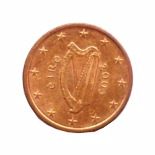 |
 |
 |
The Irish harp is the official symbol of IrelandCeltic harp. Gaelic harp. Clàrsach. Cláirseach. Guinness harp.
The Irish harp, though not as popularly well-known around the world as the shamrock for being an Irish symbol, is the official emblem of Ireland. This status dates back several centuries and the instrument's history tells much about the history of the island. 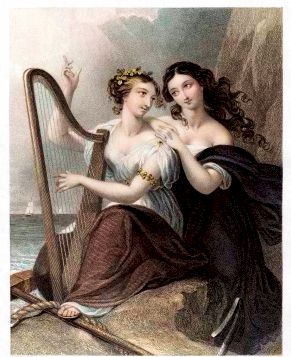 As one of the national symbols of Ireland the harp is also used extensively by businesses and other corporations wishing to convey 'Irish-ness'. Guinness bottle labels are perhaps its most famous gig while a heavily stylised harp puts in an appearance on the tail fins of budget carrier Ryan Air. There are a number of names for the Irish harp. It is also known as the Celtic harp, the Gaelic harp, the clàrsach (in Scotland) or the cláirseach (in the modern Irish language).
Purists might argue some minor points of difference, but to the layman, these terms are synonymous. The history of the Gaelic harp. While its earliest origins are lost, the Irish harp has a certain history dating back at least 1000 years. Brian Boru, the last High King of Ireland (d 1014), is said to have been an accomplished player, but while he is attributed with all manner of skills for which there is no evidence, surviving 12-century annals refer to the Celtic harp being the only music played during the Crusades. At this time, the Gaelic harp was revered in Celtic culture (and all over Europe). It was de rigeur for Scottish and Irish kings and chieftains to have their own resident harper who, in turn, enjoyed high status and special privileges. The musician's main duties were to accompany poetry recitations or the singing of psalms. While they may have composed their own music, they did not write them down. The English monarch Henry VIII declared himself King of Ireland in 1531. Such was the fame and prestige of the county's harp, it was chosen as the official national symbol of Ireland and stamped onto the coinage of Henry's new realm. The Celtic social order was on the wane by this time and as the decades pass, harpers lost much of their status, and their numbers declined. Some become travelling musicians, playing their harps and singing, because rich patrons no longer retained them. In many ways, the harp's success became a problem. Still very much recognised as a symbol of Ireland and Irish pride, the Gaelic harp became an emblem of resistence to the Crown and England. As such, it was banned at the end of the medieval period and the old Celtic harp tradition began to die out. By the 18th century, the Scottish clarsach had disappeared. A century later, the Irish harp, too, was extinct. Fortunately, a group of harpers had been lured to Belfast in 1792 for a traditional harp festival where the musician and folk music collector, Edward Bunting wrote down the music they played and the terminology of the harpers.. This was the first time traditional Gaelic harp music had been recorded on paper and it is thanks to Bunting that these genuine Celtic tunes were not lost forever. Characteristics of the Celtic harp 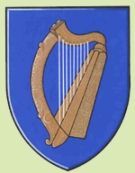 The traditional Irish harp's distinguishing features are its use of wire (usually brass) strings and its resonating chamber carved from a single log (traditionally willow). The highly tensioned strings are played with fingernails, producing a very clear sound. Today, many Irish harps use gut or synthetic string and the construction of the chamber is also significantly different. Rather than being hollowed out from one piece of wood, the soundbox is more likely to be fabricated from sawn pieces of wood glued together which creates a different sound. Traditionally-constructed Irish harps also tend to be smaller than modern models. Surviving examples of ancient harps Less than a dozen Celtic harps survive from the medieval (pre-1700) period. The oldest is the one on which the 'official' national emblem of Ireland is based: the Trinity College Harp. Also known as the Brian Boru or O'Neill harp, this 15th century Irish harp is on display in the Long Room of Trinity College, Dublin. Two other medieval harps are preserved in the Museum of Scotland: The Queen Mary harp (15th century) and the Lamont harp (date uncertain).
|
The Flag of Leinster The flag depicts the Irish harp.
The Guinness HarpThe Irish harp emblem was first used by the Dublin brewery of Arthur Guinness back in 1862 when it appeared on the label of the company's bottle of stout. Just eight years later, it was registered in London as the brewery's trademark. The emblem is based on the famous Trinity College harp (see Surviving Examples, in main text), but it has undergone many changes of style over the years and today's version is hugely simplified with just 6 strings. 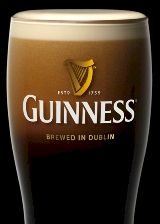
In 1960, with the Irish harp device already so synonymous with Guinness, the company named its very first lager 'Harp'. 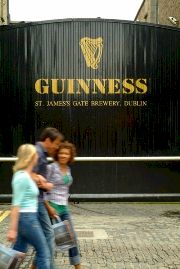 The Guinness Storehouse is one of Dublin's top attractions. The Storehouse was originally built by Arthur Guinness and Co Ltd for use as a fermentation house. After a series of adaptations, the building was no longer suitable for modern brewing processes and it closed its doors in 1986. But just over 14 years later, those doors were thrown open again to welcome visitors. The Guinness Storehouse has gone on to become one of the top three attractions of Dublin.
|
|
|
|
||
|
| Home Page | Disclaimer | Contact |Sitemap|Privacy Policy|
By Claire Santry, Copyright©
2008-2020 Irish-Genealogy-Toolkit.com. Dedicated to helping YOU discover your Irish Heritage.
|
||
